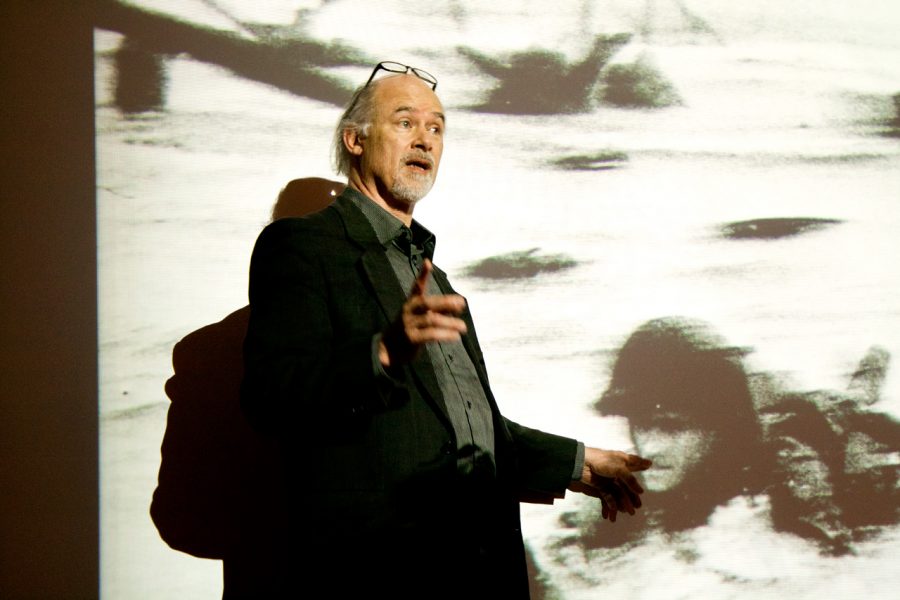Guest lecture on photography hosted by Art Department
March 19, 2012
On March 14, the Department of Art hosted guest lecturer Robert Stevens. The lecture was based on his teachings at the School for Visual Arts and the International Center of Photography, both in New York. Stevens is a photographer, educator, historian and former photography editor for Time Magazine’s international news.
“I got interested in photography as a kid since my dad worked for Eastman Kodak at the time,” Stevens said.
From there, he pursued photography in high school and community college, graduating from the University of Alabama with studies in communications and art. After graduation, he moved to Rochester, N.Y., for graduate studies at the Rochester Institute of Technology for Visual Studies. At that point, he landed a job working in the photo archives at Time Magazine and was then offered a position as an editor.
“I worked at Time Magazine all through the ‘80s, ‘90s, and first decade of the 21st century,” he said. “It was a terrific job, but stressful, since you are on call 24/7 to buy photos or compete with other magazines.”
After retiring from Time, Stevens decided to pursue another interest: teaching.
“I always wanted to teach, to pass onto students what I had learned,” he said. “In 2005, I started teaching at the School of Visual Arts and The International Center of Photography, both in Manhattan.”
Christina Covington, a senior majoring in art, attended the event.
“I’m interested in photojournalism, so I wanted to hear about his work experiences,” she said. “He had very interesting topics; I’ve never thought about how photography is everywhere, but he’s exactly right.”
For the event, Stevens was introduced by Wayne Sides, UNA professor of art and personal friend of Stevens. The focus of the lecture was photography’s history and its current domination over our everyday lives, looking specifically at friends and family, celebrities and stars, advertising, fashion, propaganda, photojournalism and news, science, nature, travel, and art in galleries, museums and books.
Stevens said photos are everywhere and that he tries to show his students as many as he can so they can understand them and their effects. Stevens shared examples of ads on the sides of buses, on billboards, in store windows and on magazines, among others.
“People are much more visual and sophisticated about visual things,” he said. “Photos are not just simple, upfront documents. If you don’t photograph something, it’s gone, and you can’t get it back.”
For Phillip Holcombe, a senior majoring in photography, the lecture was helpful.
“I want to work in photojournalism, so I came to hear about his experiences with that, and I learned that I should probably shoot more,” he said.












